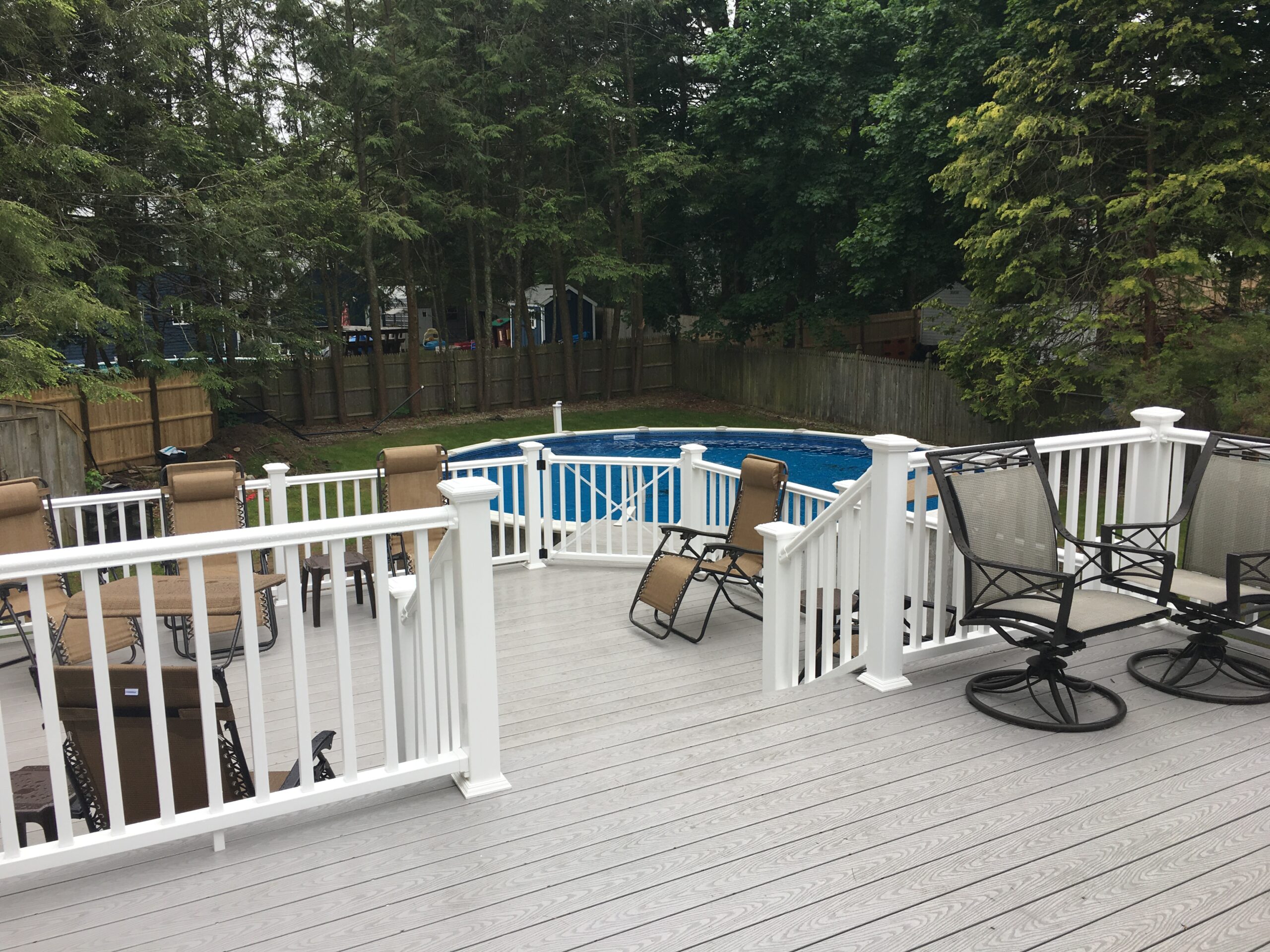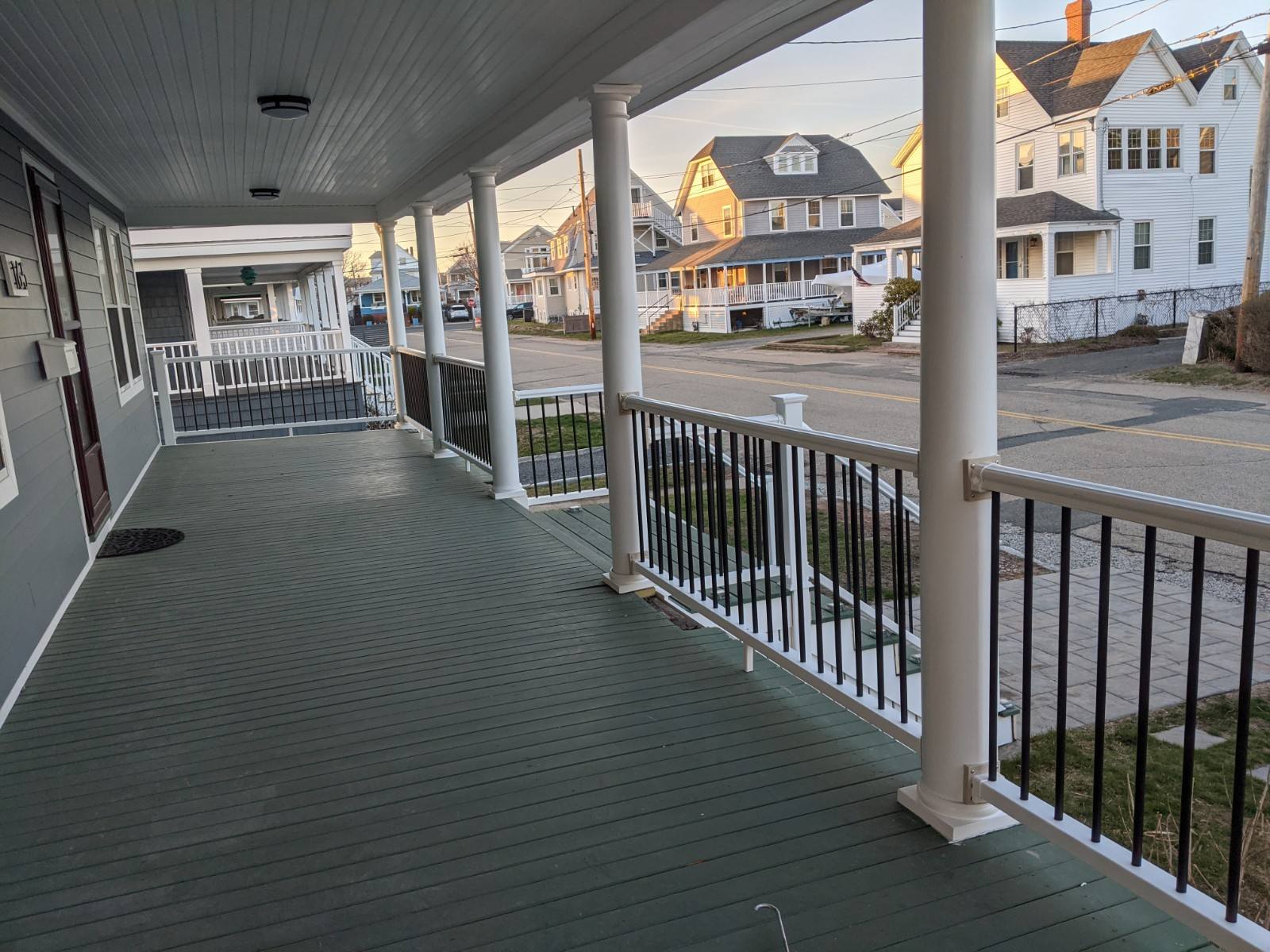
How to Winterize Your Deck and Outdoor Space in New England
As autumn fades and the crisp chill of winter sweeps across New England, homeowners begin preparing their properties for the cold months ahead. One area that often gets overlooked in the winter prep process is the deck and outdoor living space. Harsh winter conditions—snow, ice, freezing temperatures, and moisture—can cause significant wear and damage to wood, composite, and even vinyl decking materials. Properly winterizing your deck not only protects your investment but also ensures it’s ready for use when warmer weather returns.
In this comprehensive guide, we’ll walk you through how to winterize your deck and outdoor space in New England—from cleaning and repairs to protection and storage tips. Whether your deck is wood, composite, or PVC, these steps will help you prevent damage and save money on costly repairs come spring.
1. Start with a Deep Clean
Before temperatures drop below freezing, give your deck a thorough cleaning. Dirt, debris, and mildew left on the surface during winter can lead to discoloration, rot, and structural damage. Cleaning ensures your protective sealants adhere properly and prevents moisture from becoming trapped.
Steps for Cleaning Your Deck:
- Sweep away debris: Remove leaves, twigs, and dirt from the surface and between boards. This helps prevent mold and mildew growth.
- Wash the surface: Use a deck cleaner or a mix of mild soap and water. For wood decks, avoid harsh bleach that can dry out or discolor the wood. For composite decks, use a product designed specifically for that material.
- Scrub and rinse: Use a soft-bristle brush to loosen grime and rinse thoroughly with a garden hose. A pressure washer can be used on low settings, but keep the nozzle at least 12 inches away from the surface to avoid damaging the boards.
Pro tip: Schedule this cleaning on a mild, sunny day so your deck can dry completely before applying any sealant or cover.
2. Inspect and Repair Any Damage
Once your deck is clean, take time to carefully inspect it for signs of wear or damage. New England’s seasonal changes can cause boards to warp, crack, or loosen over time. Addressing these issues now will prevent them from worsening under snow and ice.
What to Look For:
- Cracked or splintered boards: Replace any severely damaged boards before winter. Small cracks can be sealed with wood filler or caulk.
- Loose nails or screws: Secure fasteners to ensure the deck structure remains stable.
- Wobbly railings or stairs: Tighten connections and check for rot at the base of posts or stair stringers.
- Signs of mildew or rot: Address soft or discolored spots immediately to prevent structural weakening.
If the damage is extensive or you’re unsure about repairs, it may be time to call in a professional home improvement contractor. A trusted company like Marine Home Improvement can inspect your deck, make repairs, and apply protective treatments before the first snowfall.
3. Apply a Weatherproof Seal or Stain
After repairs, sealing or staining your deck is the most important step in protecting it from New England’s winter moisture. Unsealed wood absorbs water, which can freeze, expand, and cause cracks or warping.
Choosing the Right Product:
- For wood decks: Use a high-quality, water-repellent sealant or stain with a UV protectant. Semi-transparent stains are ideal for enhancing wood grain while offering moisture resistance.
- For composite decks: Although composites are more weather-resistant, they can still benefit from a polymer-based sealer that repels moisture and prevents mold buildup.
Apply sealant when temperatures are above 50°F and no rain or frost is expected for at least 24 hours. A fresh coat every 1–2 years can dramatically extend the life and beauty of your deck.
4. Protect Deck Furniture and Outdoor Features
Your outdoor furniture, grills, planters, and decor are also vulnerable to winter weather. Taking time to protect or store these items will keep them looking new for many seasons.
Furniture Protection Tips:
- Store indoors if possible: Move furniture to a shed, garage, or basement for the season.
- Use weatherproof covers: If storage space is limited, invest in durable, waterproof covers to shield items from snow and ice.
- Clean before covering: Remove dirt and moisture before storage to prevent mildew and corrosion.
Don’t forget to drain and store garden hoses, empty planters, and clean your grill. Disconnect propane tanks and store them in a dry, well-ventilated area away from direct sunlight or heat sources.
5. Prevent Ice Damage
Ice buildup is one of the biggest threats to your deck in a New England winter. When ice melts and refreezes, it can cause boards to heave, nails to loosen, and finishes to deteriorate.
Prevention Tips:
- Keep it clear: Regularly remove snow using a plastic shovel (avoid metal to prevent scratches). Always shovel parallel to deck boards.
- Avoid rock salt: Traditional ice melt products can damage wood and metal hardware. Instead, use calcium chloride or products labeled safe for decks.
- Ensure proper drainage: Check that water flows away from your deck and doesn’t pool near posts or supports.
6. Don’t Forget Railings, Stairs, and Accessories
Railings, stairs, and deck accessories often take the brunt of snow and ice. Give them extra attention during winterization.
- Tighten all railings: Safety first! Loose railings can become hazardous on icy days.
- Seal stair treads: They’re more exposed to foot traffic and snow, so ensure they’re properly sealed and gripped.
- Remove any fabric items: Cushions, rugs, and umbrellas should be stored to prevent mildew and moisture damage.
Also, consider installing non-slip treads or mats for winter safety—especially if you plan to use your deck during the colder months.
7. Prepare Outdoor Lighting and Electrical Elements
If your deck has built-in lighting, outlets, or heating features, it’s essential to winterize them properly to prevent damage from moisture or freezing temperatures.
- Check seals and wiring: Inspect all fixtures for cracks or exposed wiring. Replace any damaged parts before snow arrives.
- Use waterproof covers: Protect electrical outlets and switches with weatherproof boxes.
- Switch to LED bulbs: LEDs are more energy-efficient and perform better in cold temperatures.
If you have outdoor heating elements, ensure they are stored or covered properly according to manufacturer recommendations.
8. Bonus Tip: Schedule Professional Maintenance Before Winter
While many of these winterization steps can be done yourself, having a professional inspection can make all the difference—especially for older decks or those exposed to harsh coastal conditions. A local expert understands how New England’s weather impacts various materials and can provide customized protection plans.
At Marine Home Improvement, we specialize in deck maintenance, repair, and replacement throughout Massachusetts. Our experienced team can clean, seal, and inspect your outdoor spaces to ensure they’re safe, sturdy, and ready to handle whatever winter brings.

Why Winterizing Your Deck Matters
Winterizing isn’t just about protecting your deck from snow—it’s about preserving the long-term value of your home. Proper seasonal maintenance can:
- Extend the lifespan of your deck boards and railings
- Prevent costly water damage and rot
- Keep your outdoor space looking beautiful year-round
- Ensure safety during icy or snowy conditions
By taking the time to prepare now, you’ll enjoy a smoother transition into spring with less work, fewer repairs, and a deck that looks as good as new.
Final Thoughts
Winter in New England can be tough—but your deck doesn’t have to suffer for it. With a little effort and planning, you can protect your outdoor investment from the elements and ensure it’s ready for family gatherings, barbecues, and quiet summer evenings next year.
If you need professional help winterizing your deck or outdoor space, contact Marine Home Improvement today. Our team offers expert maintenance, repair, and replacement services to help Massachusetts homeowners safeguard their homes—season after season.
Get a free consultation today! Call us or visit our website to schedule your deck inspection before winter hits.

People Also Ask About Winterizing Decks and Outdoor Spaces
Can snow ruin my deck during a New England winter?
Yes, heavy snow and ice can cause significant damage to decks if left unchecked. Moisture can seep into the boards, freeze, and cause cracks or warping. Regular snow removal and using a water-repellent sealant before winter can protect your deck from long-term damage.
What’s the best sealant to use on a wood deck before winter?
For New England climates, choose a high-quality oil-based or semi-transparent sealant with UV and water protection. Products designed for cold-weather durability will help your deck resist snow, ice, and salt damage. Reapply every one to two years for best results.
How often should I clean and seal my deck?
Most decks should be cleaned at least twice a year—once in the spring and again before winter. Sealing every 1–2 years helps maintain protection against moisture, sun, and temperature changes common in New England.
Is it okay to use salt on a wood deck in winter?
No, traditional rock salt can corrode metal fasteners and dry out wood, leading to cracks. Instead, use calcium chloride or a pet-safe ice melt labeled safe for decks. These products melt ice without harming your decking material or plants nearby.
Should I remove all snow from my deck?
You don’t have to remove every inch, but keep snow levels low to avoid excess weight and water damage. Use a plastic shovel to gently clear snow in the direction of the boards. Avoid ice chippers or metal shovels, which can scratch and splinter wood or composite decking.
Can composite decks handle New England winters?
Yes, composite decks are more resistant to moisture and temperature changes than wood, but they still benefit from cleaning and preventive care. Clear snow regularly, avoid harsh ice melt chemicals, and rinse off salt or grime to prevent surface staining.
How can I protect my outdoor furniture from the snow?
Store furniture indoors if you can. If that’s not an option, cover it with waterproof, breathable covers. Clean and dry all pieces before covering to prevent mildew. Raise items slightly off the deck to avoid freezing or water pooling underneath.
What home maintenance should New England homeowners do before winter?
Before winter, homeowners should inspect and seal decks, clean gutters, check roof shingles, and ensure windows and doors are properly insulated. Draining outdoor faucets, sealing cracks, and checking heating systems can also prevent major winter damage and improve energy efficiency.
Is winter a good time for home improvement projects?
Absolutely. Winter is often slower for contractors, which means better scheduling flexibility and sometimes lower costs. Indoor projects like window replacement, door upgrades, or insulation improvements are ideal during the colder months in New England.
